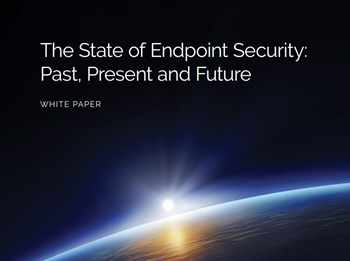Underprepared workforces have led to a notable spike in data security threats, exploiting vulnerable points in businesses around the globe. This new work environment comes with its own set of challenges. Here are four essential practices your employees need to know to avoid falling into cybercriminals' traps.
1. Don’t use public WiFi
Working out of a cute coffee shop might be your employees' idea of heaven, but using public WiFi can cause hell for your data protection efforts. A stark lack of firewalls allows anyone using that network to hack into company data with ease. If employees still want to work on public networks, they must set up a personal hotspot and employ a VPN.
2. Don’t use personal devices for work
If your remote workers are using personal devices to complete tasks, there’s a high possibility that they are a vulnerability, putting the company at risk of a security breach. Company protocols, such as regular updates and malware scans, likely aren’t being maintained by remote workers on their devices to the same degree that company devices are.
3. Follow password policies
Your employees may unknowingly sabotage several high-budget security measures if they have weak or repetitive passwords. Ensure that your company has a password policy in place and utilizes a password manager to build strong, unique passwords that are different for each application they need to use for work. It should also be policy that work passwords are different from any personal passwords.
4. Utilize zero trust network access
Some of the most severe data breaches have occurred due to users gaining access to unauthorized levels of network resources and devices. To avoid this, there needs to be an enforceable, identity-driven access policy that includes a seamlessly secure two-factor/OTP authentication or multifactor authentication (MFA) across the organization.
Zero trust network access identifies, profiles and authenticates all users and devices before providing appropriate access, enhancing your access security.
What are the best ways to help employees follow these practices?
Educate and outline best practices
Without the correct knowledge, employees will be left in the dark about protecting company data, making your business vulnerable to attack.
As a new working model comes into play, so do new threats which demand refreshed awareness. This means that old, dated security efforts will be incomplete without further employee training.
By focusing employees on the threats and risks, they need to be aware of and the cybersecurity best practices they need to know, you can avoid these security issues.
Educating employees on specific best practices, and enforcing them, as a rule, can lead to a safer workforce.
Create a security-first culture
By empowering employees at every level of the organization to control their security, you encourage a more thorough cybersecurity approach.
Compared to previous models of one or two players within the company taking responsibility for security, this well-rounded approach allows employees to become committed to protecting company data, rather than it becoming background noise.
Cybersecurity is as much about people as it is about technology. By changing employee mindset and habits, you can achieve a more cohesive security plan than ever felt possible.
The key components include:
Perimeter-less technology
Employees are spread over multiple locations in a hybrid work model, working together online.
With some employees utilizing less secure home internet connections for work and others using personal devices, it’s a minefield of non-compliance. This is why it’s so essential to upgrade security systems and employee tools. These upgrades will ensure that software matches the security demands of an ever-evolving hybrid environment.
You can ensure compliance throughout the workforce by investing in cloud-based SaaS applications, secure VPNs, identity and access management tools, unified endpoint management systems and backup and recovery solutions.
Documented policy
If security policies and procedures aren't explicitly written, it’ll feel like an uphill battle trying to enforce them. For example, if there isn't a policy stating 'acceptable use' for your VPN in writing, employees will be tempted to use it for non-work purposes once they know what’s expected of them and why they’re more likely to comply.
Communication and support structures
A company can handle threats more effectively when communication and support channels are explicitly defined and easily accessible.
Each staff member must know how to raise the alarm of an attack, whom to contact and what to do after reporting it. This openness will also allow you to detect threats early, allowing you to minimize and mitigate their impact.
Additionally, you should clearly define what tools can and can't be used for communication and collaboration. For instance, employees should be discouraged from using personal communication apps such as WhatsApp or Facebook for official communication and file transfer. This not only put company data in harm's way, but it might also hurt your chances of achieving compliance.
Keeping employees safe in a hybrid work environment isn't rocket science. By formulating a culture of open communication and employing the correct tools, you’ll be sure to build a new, robust security-first workforce.
Further reading:
Access the latest business knowledge in IT
Get Access



Comments
Join the conversation...